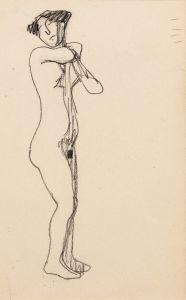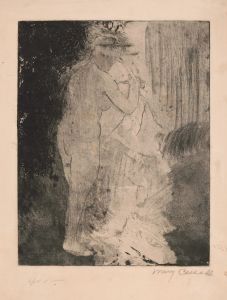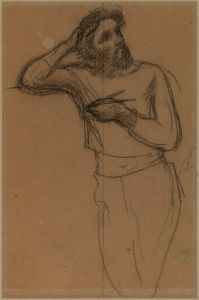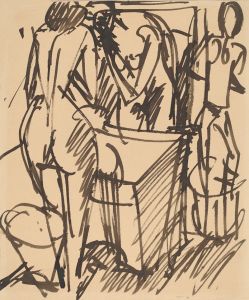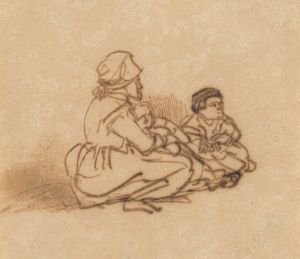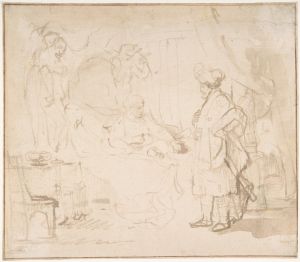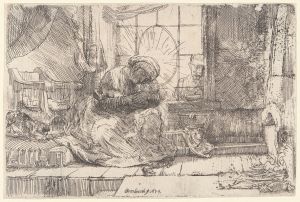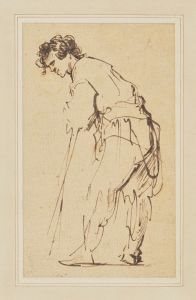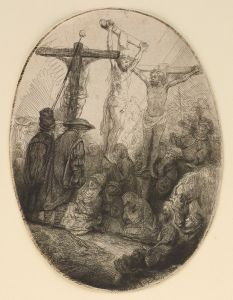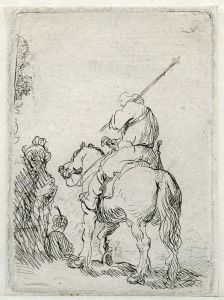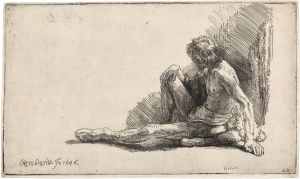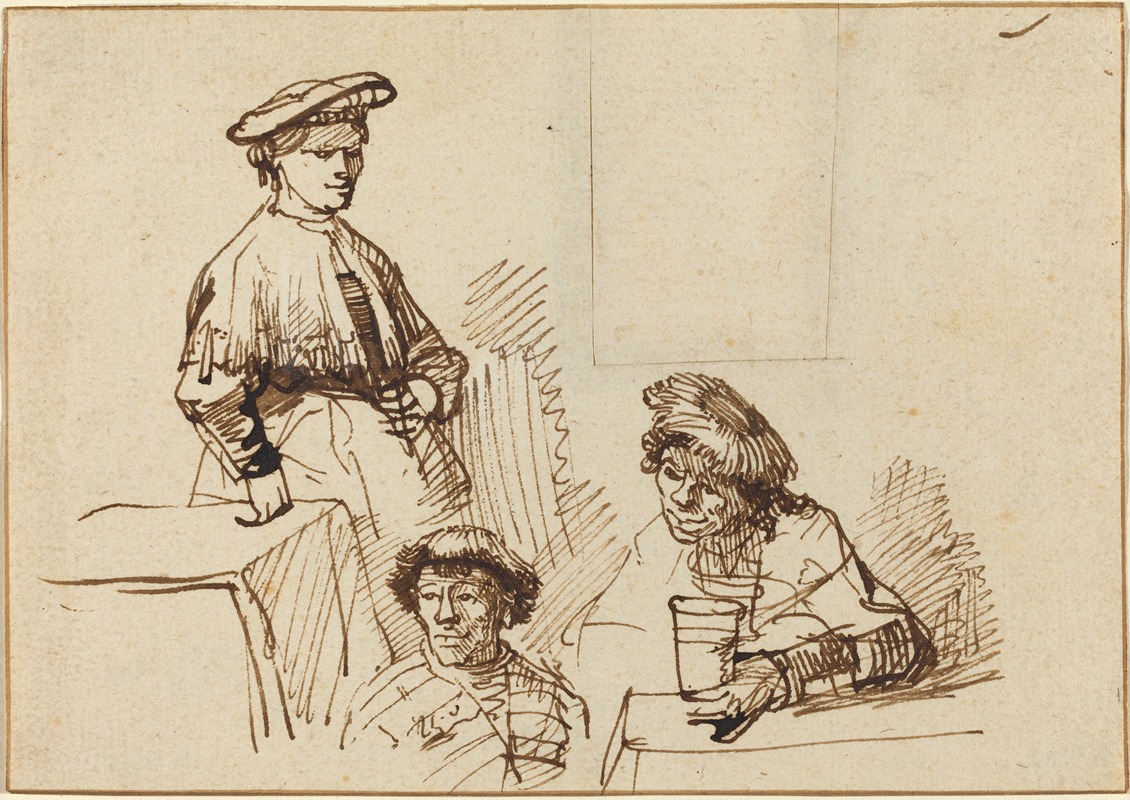
Sketches from a Tavern – Woman Standing and Two Men Seated
A hand-painted replica of Rembrandt van Rijn’s masterpiece Sketches from a Tavern – Woman Standing and Two Men Seated, meticulously crafted by professional artists to capture the true essence of the original. Each piece is created with museum-quality canvas and rare mineral pigments, carefully painted by experienced artists with delicate brushstrokes and rich, layered colors to perfectly recreate the texture of the original artwork. Unlike machine-printed reproductions, this hand-painted version brings the painting to life, infused with the artist’s emotions and skill in every stroke. Whether for personal collection or home decoration, it instantly elevates the artistic atmosphere of any space.
"Sketches from a Tavern – Woman Standing and Two Men Seated" is a drawing by the renowned Dutch artist Rembrandt van Rijn. Rembrandt, born on July 15, 1606, in Leiden, Netherlands, is widely regarded as one of the greatest visual artists in the history of art and the most important in Dutch art history. His contributions to art include a prolific output of paintings, drawings, and etchings.
This particular drawing, "Sketches from a Tavern – Woman Standing and Two Men Seated," is an example of Rembrandt's skill in capturing everyday scenes with remarkable detail and emotional depth. The drawing depicts a simple yet evocative scene: a woman standing and two men seated, presumably in a tavern setting. The composition is informal, reflecting a moment of ordinary life, which was a common theme in Rembrandt's work.
Rembrandt's drawings are known for their spontaneity and fluidity, often executed with a few swift, confident strokes that convey a great deal of information and emotion. In this drawing, the figures are rendered with a sense of immediacy and liveliness. The woman is depicted standing, possibly engaged in conversation or serving the seated men. The men, seated at a table, appear to be in a relaxed posture, suggesting a moment of leisure or social interaction.
The use of light and shadow in Rembrandt's drawings is particularly noteworthy. Even in his sketches, he demonstrates a masterful understanding of chiaroscuro, the contrast between light and dark, which adds depth and volume to the figures. This technique helps to create a sense of three-dimensionality and realism, making the scene more vivid and engaging.
Rembrandt's ability to capture the human condition, with all its nuances and subtleties, is evident in this drawing. The expressions and body language of the figures suggest a narrative, inviting viewers to imagine the context and relationships between the characters. This focus on human interaction and emotion is a hallmark of Rembrandt's work, setting him apart from many of his contemporaries.
The drawing is also significant for its historical context. Created during the Dutch Golden Age, a period of great wealth, cultural achievement, and artistic innovation in the Netherlands, it reflects the social and cultural milieu of the time. Taverns were common social hubs where people from various walks of life would gather, and scenes like the one depicted in this drawing would have been familiar to contemporary viewers.
Rembrandt's drawings, including "Sketches from a Tavern – Woman Standing and Two Men Seated," are highly valued for their artistic merit and historical significance. They offer insight into the daily life and social customs of the 17th-century Netherlands, as well as into Rembrandt's creative process and his ability to capture the essence of his subjects with remarkable economy and expressiveness.
In summary, "Sketches from a Tavern – Woman Standing and Two Men Seated" is a testament to Rembrandt van Rijn's extraordinary talent as a draughtsman. It exemplifies his skill in portraying everyday scenes with depth, emotion, and realism, and it provides a window into the social life of the Dutch Golden Age.





